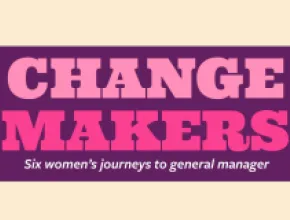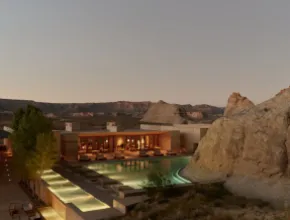When planning a meeting, chances are you have a phenomenal list of food and beverage, audiovisual and teambuilding ideas, but if you don’t select the correct venue or destination to execute your desires, let’s face it, a flawed meeting is more likely than a successful one.
For planners, site selection is about identifying your meeting requirements and finding and evaluating the potential site to see if they can fulfill your needs.
The venue makes a definitive first impression to an attendee at a meeting or event and it almost instantly sets a positive or negative tone.
Meetings Today spoke with four top meeting planners to highlight some of their best tips on site selection.
 Ann Windham James, CEO,
Ann Windham James, CEO,
Imagine Xhibits Inc.
Consider these suggestions for optimal audiovisual performance.
Make sure the screen size for the room is appropriate so every attendee can hear and see clearly. You need the right message, but if you don’t deliver it well visually with correct sound, your message can be confusing and lost. It’s extremely important to pay close attention to all levels of interaction, such as visual, lighting and sound to maximize the communication opportunity. For a money and logistics saver, an app can make a cell phone a microphone for a small low-budget group versus a full stage and audiovisual for a high-end conference. I’ve had lots of success with the Crowd Mics app when working with small groups that simply need consistent, reliable amplification.
Utilize private Internet instead of public Wi-Fi.
Due to heightened security concerns and the possibility for hacking information in a shared group Wi-Fi, we recommend setting up your own secure private hub/portal or hub spot. You can determine who has access to your content and data and the level of permissions each user has with your information. Private Internet Access is a system where there are no unencrypted moments. Plan on enough bandwidth for two devices per attendee.
 Karen Shackman,
Karen Shackman,
President, Shackman Associates New York
Understand how a brand fits into a venue and how that venue impacts the goals of the event.
The reputation of a venue can have a very strong draw for any meeting or event. A venue might sound really amazing, but does it reflect the corporate culture? If the location is in direct conflict with the brand and message of the company, this can have an adverse effect. It’s also important to check with the venue that there will be no competitive brands in-house at the same time as your event. Find out what other events are in the same venue. Unless the venue is able to accommodate multiple events as independent events, with possibly separate entrances, kitchens, etc., this could pose overlapping issues on many levels. For any food and beverage brands, it is important to ensure that the venue selected supports those brands. In the case of outdoor events, it’s important to note what is in the surrounding area. We recently had to redirect an outdoor event because there was a billboard across the street from a competitor that would have been in direct eyesight of all guests.
Comprehensively research the demographics of your group.
Planners should consider many aspects of their attendees, including age, gender, position in the company (executive, incentive top performer, etc.) when selecting venues. This will determine whether the venue should be more classic in nature or more contemporary with amenities that can support Wi-Fi activation stations, virtual reality booths and other high-tech items. For entertainment, millennial attendees may want after-hours options for the event, so selecting a venue for a corporate dinner or cocktail party close to an area with lots of bars, nightclubs and late-night restaurants could add to the attendee experience.
 Genny Castleberry, Director of Sourcing,
Genny Castleberry, Director of Sourcing,
Spear One
Arrive one hour early for hotel site visits.
I recommend showing up unannounced at least one hour before your scheduled site inspection. In that time, you can leisurely walk around, interact with hotel staff as if you’re a guest, ask questions, glance in the restaurants and dine there if you have time to gauge the service level and attentiveness. Also, ask for recommendations for a local restaurant to see if they’re responsive to all your needs, not just those in the hotel. These behind-the-scenes interactions give you impressions that may drive your next steps and help you decide whether the property would be a good fit for you and your client’s needs.
Keep your attendees constantly involved before, during and after meetings.
Complimentary Wi-Fi access in guest rooms and all meeting spaces is a must for attendees to not only stay involved with the meeting, but to also communicate with friends, families and co-workers during the event. Excellent Wi-Fi allows them to access e-mail, social media feeds and share their experiences instantly, which helps promote the meeting. It’s important to keep in mind the attendees’ overall experience, not just the time they spend in meeting rooms and at events. A mobile app is another way to engage your attendees and reach them through push notifications throughout your meeting and keep them engaged.
 Amy McCollum, Senior Program Manager,
Amy McCollum, Senior Program Manager,
metroConnections
Be aware of significant trends impacting site selection.
The U.S. economy is showing signs of improvement and it’s increasingly a seller’s market in North America with more demand for space, so planners need to book earlier. While contracts are getting stricter, the market is still open to planners seeking a good deal with concessions and a good rate. Europe has become more attractive as the U.S. dollar has gained strength, making many destinations a good value today that were cost prohibitive just a few years ago.
Self-check cell and tech connectivity on your site visit.
Connectivity is a very important concern, and not just for Millennials and Gen-Xers. All age groups want great connectivity, including Boomers. I don’t leave anything to chance and I like reassuring myself that connectivity is at a high level. During a walking tour of a hotel or a resort, I’ll constantly check my phone in the lobby, hallways and other common areas to make sure I’m getting good service. I also inquire about charging stations, and if they’re not adequate I make a note to bring our own. Our clients are knowledgeable about what they want and they’re used to immediate communication and response. Planners should thoroughly identify technology needs before the site visit and make sure the venue can accommodate those needs during the meeting and before and after meetings for attendees.






